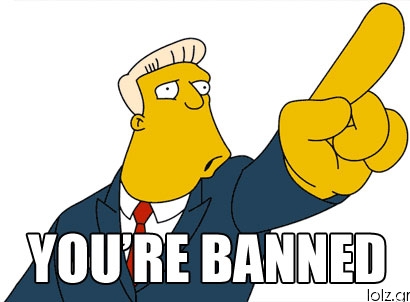Compensation for deaths in 1988 Ahmedabad air crash: High Court
In an elaborate decision, the Gujarat High Court has confirmed the grant of compensation to the kin of the deceased to died while travelling as a passenger in an Indian Airlines flight which crashed near the Ahmedabad Airport on 19.10.1988. It a legal note it was argued before the High Court by the airlines that "its liability for damage sustained in the event of death of or injury to a passenger is limited to a sum of Rs.2 lakhs under Rules 17 and 22 of the Second Schedule to the Carriage by Air Act, 1972 read with the notification dated 5.7.1980 issued by the Ministry of Tourism and Civil Aviation, Government of India under Section 8(2) of the said Act. According to the Indian Airlines, in order to obtain any higher compensation, the plaintiffs have to prove under Rule 25 of the said Schedule that the damage resulted from an act or omission of the Airline done recklessly and with knowledge that damage would probably result, so as to render the limit of liability (Rs.2 lakhs) inapplicable."
The kin of the victims, on the other hand, argued that there were "various aspects to show not only negligence but also recklessness on the part of Indian Airlines and its employees with knowledge that damage would probably result" such as "over-utilization of aircraft, lack of suitable training, fatigue of the crew, sending inexperienced co-pilot with not very Senior pilot in command, defect in the pressure altimeter of the co-pilot, proper briefing was not carried out by the pilot, the pilot and the co-pilot were not aware of availability of VASI lights and non-availability of the approach lights at the Ahmedabad Airport, the pilots did not seek any permission or clearance for landing, Standard call outs were not given out by the pilot and the co-pilot after 1000' that is after they had descended upto 1000' above the ground level, the speed was 160 kts. which was higher than the prescribed speed, the pilots should not have descended below 500 ft. MDA unless they had sighted the runway. There was no panic or any failure of structure or instrument. Both the pilots were unaware of the altitude of the aircraft and were desperate to land at the Ahmedabad Airport in spite of adverse weather conditions and poor visibility. The pilot and the co-pilot were keen to land the aircraft anyhow, even though there was sufficient fuel even to wait for getting landing clearance or to fly back."
On the factual scenario, the High Court decision noted that the "aircraft involved in the accident was a basic series Boeing 737 Aircraft VT-EAH and was on its daily scheduled flight IC 113 from Bombay to Ahmedabad in the morning of 19th October 1988. The aircraft was carrying on board 135 persons i.e. 6 crew members (pilot, co-pilot and 4 cabin crew) and 129 passengers (124 adults and 5 children). The flight took off from Bombay at 0605 IST in the morning. The pilot reported overhead of Ahmedabad at 0647 IST. The aircraft crashed on the outskirts of village Chiloda Kotarpur, near Noble Nagar Housing Society, near Ahmedabad. The plane crashed at a distance of 2540 metres from the beginning of runway 23 on extended central line of the runway in a paddy field at about 0653 IST. In this air crash 124 passengers and 6 crew including pilot and co-pilot lost their lives on the spot. 5 passengers escaped with serious injuries, but 3 of them succumbed to the injuries later on in the hospital. 2 passengers survived, viz. Mr Vinod Rewa Shankar Tripathi and Mr Ashok Agarwal. Thus in all, out of 135 persons on board, 133 persons lost their lives."
The High Court relied extensively on the findings recorded by the Court of Inquiry appointed by the Government of India to look into the accident which noted that "the Indian Airlines and the Airport authorities received the message about the plane crash from Police Sub Inspector of Ahmedabad Airport Security" and concluded that "the cause of the accident is error of judgment on the part of the Pilot-in-command as well as the Co-pilot due to non-adherence to laid down procedures, under poor visibility conditions." The High Court also took note of the findings of the lower court which recorded that "the attitude of the pilots was indifferent and casual and that there was negligence in taking a decision to land when the runway was not sighted. Recklessness could be inferred from lack of diligence shown by the pilots, from the degree of error of judgment found in the report, and knowledge could be imputed because the pilot ought to have known of the risk and damage. It was also held that poor visibility was not passed on to the pilots."
The High Court applied the time-tested legal doctrine of Res ipsa loquitur to hold the airlines liable. Explaining the legal position thereon, the decision of the High Court records;
32. Res ipsa loquitur literally means the thing speaks for itself. The maxim means that an accident may by its nature be more consistent with its being caused by negligence for which the defendant is responsible than by other causes, and that in such a case the mere fact of the accident is prima facie evidence of such negligence. The maxim res ipsa loquitur has been considered by the Hon'ble Supreme Court in a number of cases. Ordinarily, mere proof that an event or accident, the cause of which is unknown, has happened is no proof of negligence. The maxim applies to cases where the peculiar circumstances constituting the event or accident proclaim that the negligence of somebody is the cause of the event or accident. In the first place, the event or accident must be of a kind which does not happen in the ordinary course of things if those who have management and control use due care; secondly, it must also be shown that the event or thing which caused the accident was within the defendant's control. Res ipsa loquitur is in essence no more than a common sense approach, not limited by technical rules, to the assessment of the effect of evidence in certain circumstances. It means that a plaintiff prima facie establishes negligence where (i) it is not possible for him to prove precisely what was the relevant act or omission which set in train the events leading to the accident, but (ii) on the evidence as it stands, i.e. in the absence of any evidence from the defendant, it is more likely than not that the effective cause of the accident, whatever it may have been, was some act or omission of the defendant or of someone for whom the defendant was responsible, which act or omission constitutes a failure to take proper care for the plaintiff's safety. The application of res ipsa loquitur is not necessarily excluded merely because there has been a possibility of outside interference with the things through which the accident happened. The principle of res ipsa loquitur only shifts the onus of proof, in that a prima facie case is assumed to be made out, throwing on the defendant the task of proving that he was not negligent.
Extensively dealing with each of the technical aspects pointed out by the parties to examine the negligence on the part of the airlines, the High Court held that it adopted the "findings of the Court of Inquiry and hold that the accident in question was caused by the composite negligence of the Indian Airlines and their pilots and the Airport Authority and their employees." The Court also brushed aside the legal submissions of the airlines concluding thus;
We are, therefore, of the view that for the accident in question i.e. the crashing of the Indian Airlines corporation aircraft Boeing 737 Aircraft VT-EAH on its daily scheduled flight IC 113 from Bombay to Ahmedabad at 0653 IST in the morning of 19th October, 1988 at a distance of 2540 mtrs. from the beginning of runway 23 at the Ahmedabad Airport in poor visibility conditions, the major share goes to the pilot-in-command and the co-pilot of the Indian Airlines. They acted recklessly with knowledge about probable damage about the consequence of their acts and omissions. We are also of the view that there was some negligence on the part of the Airport Authority of Ahmedabad in not providing the latest visibility report to the aircraft by getting the RVR from the Meteorological office at the airport (paras 53 to 57 hereinabove). The degree of negligence on the part of the pilot-in-command and the co-pilot of the Indian Airlines was so high that the same amounted to recklessness on their part as contemplated by Rule 25 to the Second Schedule to the Carriage by Air Act, 1972. The accident in question was because of recklessness on the part of the Indian Airlines and their servants, particularly the pilot-in-command as well as the co-pilot, with knowledge of the probable consequences of attempting to land without any clearance from the Air Traffic Control, Ahmedabad, without having cared to spot the VASI lights and without having cared to take note of NOTAMS sent by the Airport Authority of India, Ahmedabad about availability of VASI lights and non-availability of Instrument Landing System and non-operational approach lights.
In these factual determinations, the High Court directed compensation to be paid to the victims' kin including interest thereon. Have a look at the detailed decision.


Yorumlar
Yorum Gönder